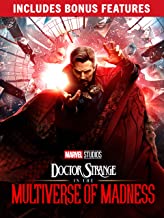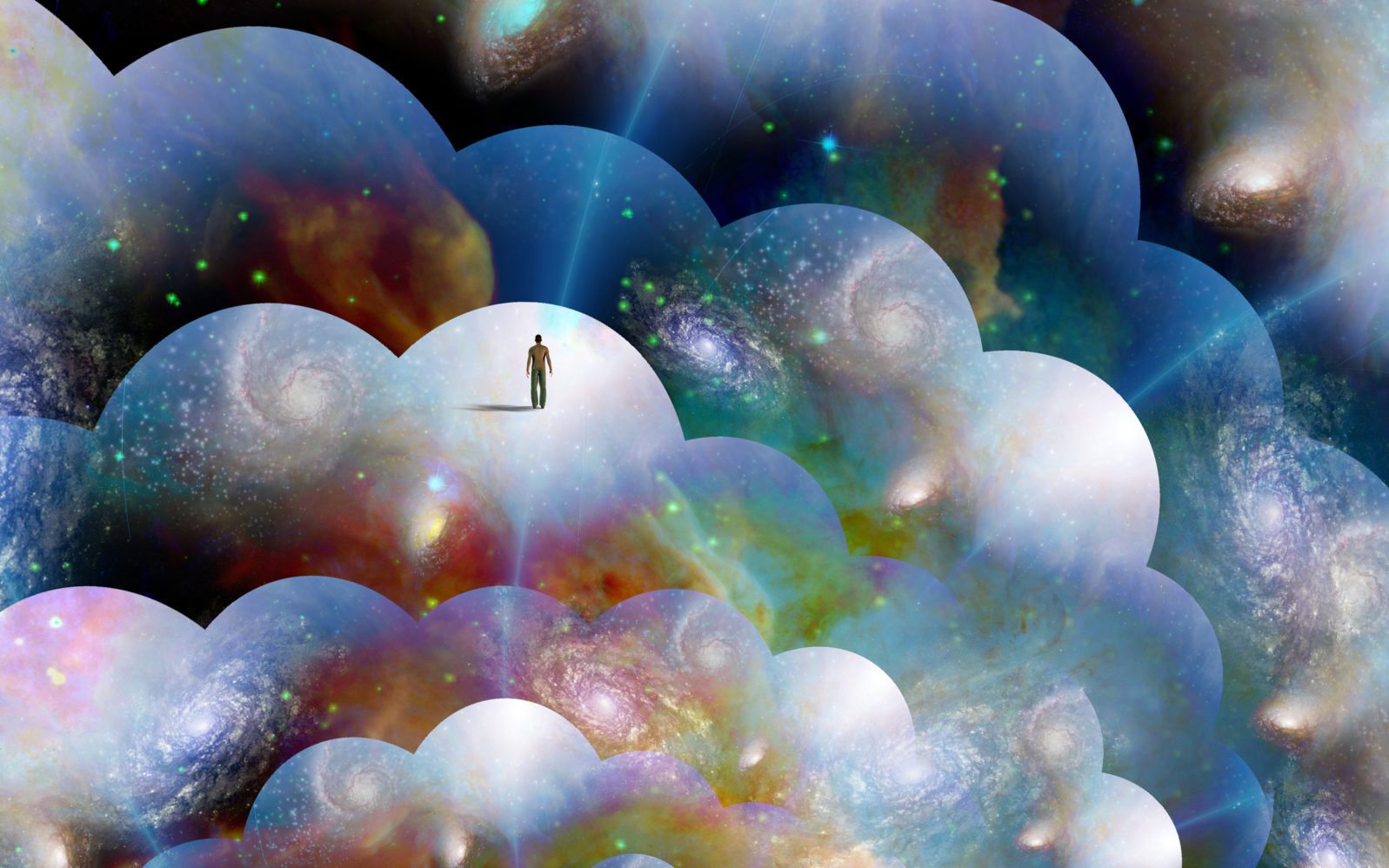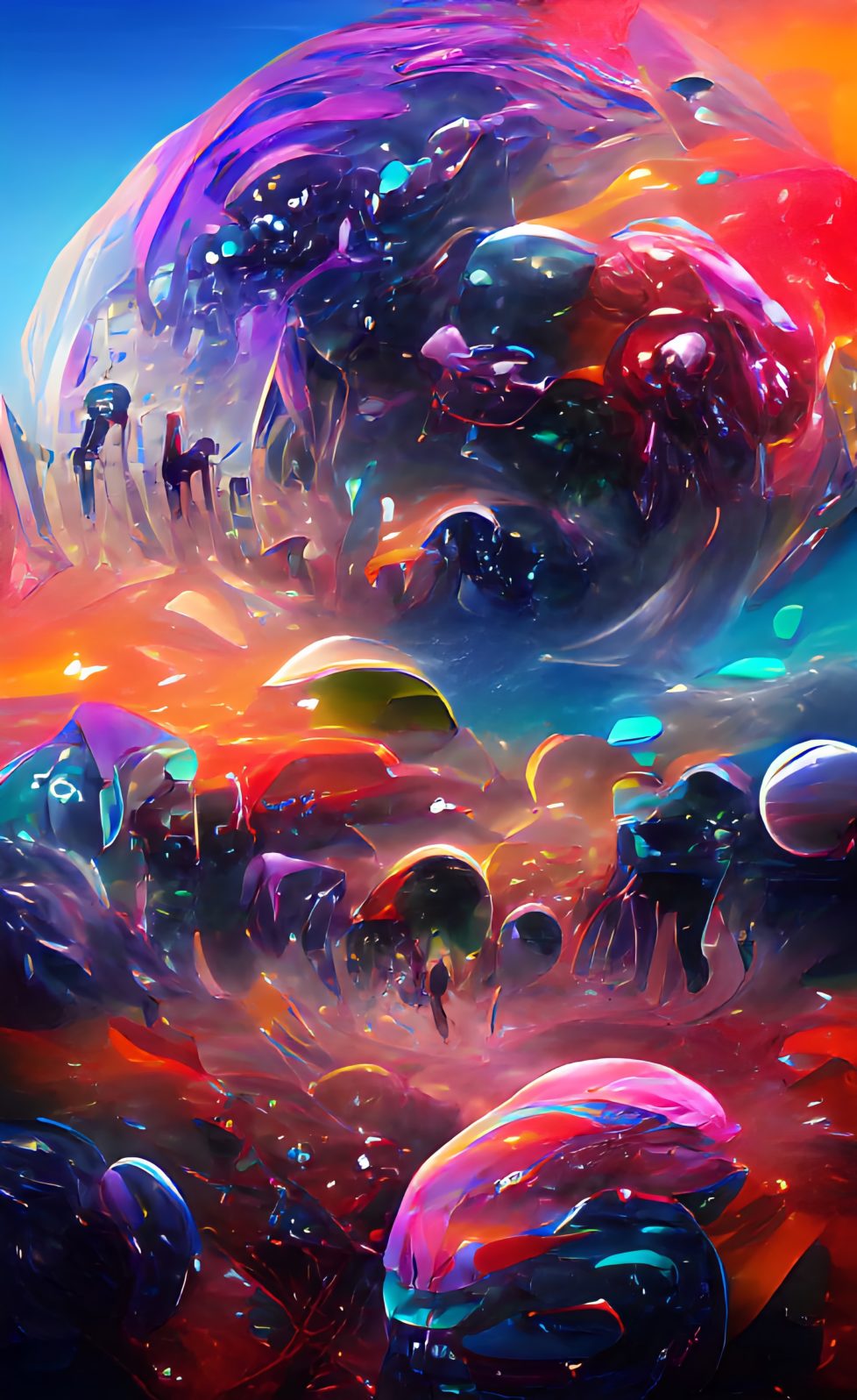Madness: Why Sci-Fi Multiverse Stories Often Feel Boring
In a multiverse, every plot development, however implausible, is permitted because we know it won’t affect our return to the expected climaxFilmmakers communicate with audiences using common and accepted story devices (tropes) that viewers identify with — maybe the “average person takes the crown” or “love triangle.” Some tropes are overused or used in ways that undermine the story.

In discussing what I think went wrong with Dr. Strange in the Multiverse of Madness (2022) and some similar films, I’ll use the word trope to refer to any story element that is used to push the plot. I find four tropes particularly annoying: the Multiverse, Time Travel, the Liar Revealed, and the MacGuffin Chase. Because I’ve just finished reviewing Multiverse of Madness, let’s start with the Multiverse trope.
Before reviewing the Dr. Strange sequel, I’d written an essay, “Dr. Strange: Can the Multiverse Really Work as a Plot Device?,” which focused on the Mouse and his nefarious motives to use and reuse established characters and stories while blatantly ignoring the fans’ connections to their favorite superheroes. The Mouse was simply utilizing the multiverse as a means to write wild stories with no regard to continuity, essentially using the Marvel Comics Universe as a blank canvas for whatever idea, new character, or social message the Mouse wanted. Here I want to look at the various problems the Multiverse trope creates in storytelling as a whole.
What matters in storytelling?
The first thing that matters is stakes: That is, what happens if, presented with a problem, the story character fails to solve it? How does a writer establish stakes? YouTube Channel Overly Sarcastic Productions calls the background to the problem “the status quo.” That’s the point at which the story starts; it’s a viewer’s understanding of the characters, their situation, and their world.
Every story begins with a status quo. The story will end with the status quo being improved, maintained, or destroyed (the (resolution.) Either the central character (protagonist) succeeds or fails. The difference that makes determines how the viewer will comprehend the stakes.
With the Multiverse trope, part of the status quo must, by necessity, be the original universe. The stakes in the story will — at least in part — be determined by the fate of the original universe should the protagonist either succeed or fail.
 Image Credit: rolffimages -
Image Credit: rolffimages - And here lies the real problem with the Multiverse trope. Regardless of what happens in the multiverse, the viewer knows that, before the story can properly end, the audience — not necessarily the protagonist — must return to the original universe.
There’s a reason for this. Stories — again, by necessity — must, in one fashion or another, form a closed loop. Obviously, a story cannot go on forever, so how does the writer determine when to put the pencil down?
Most often, the writer makes the story come “full circle.” One way is to set the climax of the story in a familiar location. Another is to confront the protagonist with a failure suffer previously in the story. Some protagonists “discover their roots,” or who they really are, or… pick your cliché. The viewer comes to understand the plot’s progression through these frequent call backs to earlier portions of the story.
This is one of the ways a writer keeps the audience’s attention. In a sense, everyone has read or seen every story trope before. Views who get an idea of what’s going to happen without predicting the particulars anticipate future events to see if they’re right. This makes the viewer a participant in the story, rather than just a spectator. Author Brandon Sanderson, refers to this as making and fulfilling promises.
 Image Credit: Nikokvfrmoto -
Image Credit: Nikokvfrmoto - Aristotle referred to and countless subsequent ones.
It’s an old idea. A classical approach to storytelling dates back about two and a half millennia to Aristotle’s Unities.
Aristotle (384– 322 BC), an ancient philosopher, wrote about classic Greek tragedies, some of which survived and are still staged. He thought a good deal about what worked and what didn’t. He concluded that there are three unties: Unity of Time, Unity of Place, and Unity of Action. While scholars debate his precise meaning, his rules were designed to create a sense of pacing, to aid the viewer’s sense of the story.
When it comes to the Unity of Place — as it pertains to the multiverse — the fact that there are many different places, is not, in itself, a story problem. In a theatre, there is often more than one set during a production and multiple scenes often take place on the same set.
Movies do the same thing. In Avenger’s Endgame, the majority of the movie takes place not within the past — an alternative universe in its own right — but at the Avenger’s compound. The climax of the film also takes place at the compound. This is a subtle way to let the viewer know they are nearing the end of the film, and it helps to build the tension. Dr. Strange in The Multiverse of Madness does the same thing but not as cleanly. The movie introduces the Darkhold Castle only during the “second act,” then has the climax of the film take place in the temple, accomplishing the same goal as Endgame.
Where the multiverse fails
Now, taking all of this into consideration, here is the main problem with the Multiverse trope. Unless the multiverse is the centerpiece of the story — rather than just an action element, as in Multiverse of Madness — there is very little that a writer can do to stay in control of the story. The writer can’t really endanger the characters because the viewer knows that somehow, some way, they must return to the original universe where they started.
That is why, when Wanda was chasing Dr. Strange and America Chavez down a winding tunnel, there seems no tension whatsoever, despite the dark ambiance of the scene.
The viewer is already anticipating a return to the Dark Temple for the climax of the film.
Similarly, when Dr. Strange is on trial for his life, the viewer knows that there is no way the writer is going to kill the protagonist during a show trial in a hitherto unknown universe.
In short, every scene in the multiverse feels like waiting. The viewer will literally be waiting for the rest of the movie to happen while inside the multiverse. The writer can show some unique visuals, have some fun little monster to fight or run from. Beyond that, the story cannot progress much. That is also why some MacGuffin Chase — pursuit of a trinket — is introduced so the protagonists can have something to do until the writer decides to advance the plot.
Why do you think the actors were walking casually around a decimated universe toward the end of the Dr. Strange sequel? It was as if both the actors and writers knew nothing mattered until the cast reached the Darkhold Temple for the climax of the film. This is why stories involving a multiverse often feel boring.
Can an interesting multiverse story be written?
Sure. Rick and Morty — a successful television series — deals with a multiverse. But Rick and Morty is a comedy and therefore the stakes — apart from connecting with human emotions — are relatively low. Even if the characters wipe out their original universe, the whole thing is treated as a gag. That’s not something I prefer as a viewer, but it can work as a plot.
However, most of the time, the multiverse is a cheap way to escalate drama. In my opinion, it simply cannot do so effectively because the viewer understands that things must return to their original starting point. Otherwise, how could the story end rather than simply stop? Even if the writer chooses to subvert the viewer’s expectations, he or she must hint that this subversion is going to take place, or the viewer will feel cheated.
Most screenwriters don’t seem to think about all this; they simply use the multiverse as a means to make the stakes seem bigger. But the viewer knows better. Besides, once there’s a multiverse-threatening crisis, how can there be a sequel? The next story will have to be about the multiverse, and then the next one, and the next one. All the while, the tension the viewer feels will be no different than if the writer had chosen to write another cliché story about saving the world. Why add the extra steps? How about we just save the world and be done with it?
Here’s my second trope, Time Travel: Science fiction: Time travel can work — if clear rules are chosen. I despise the Butterfly Effect in time travel stories because there is simply no way to establish what is at stake. Generally, for a satisfactory ending, the reader expects a return to the present. What to expect at that point must be carefully planned.
Here are all the portions of my extended review of Dr. Strange in the Multiverse of Madness, which forms the background to my comments above.
Here are my thoughts on four science fiction (and other) storytelling devices (tropes) that can be pitfalls if not properly managed:
Multiverse Trope: Madness: Why sci-fi multiverse stories often feel boring. Gary Varner: In a multiverse, every plot development, however implausible, is permitted because we know it won’t affect our return to the expected climax. Every scene in the multiverse feels like waiting. The viewer will literally be waiting for the rest of the movie to happen while inside the multiverse.
And the Time Travel Trope: Science fiction: Time travel can work — if clear rules are chosen I despise the Butterfly Effect in time travel stories because there is simply no way to establish what is at stake. Generally, for a satisfactory ending, the reader expects a return to the present. What to expect at that point must be carefully planned.
Plus: The Liar is Revealed! But does anyone still care? Stories where the central character lies about something important often waste audience time without building tension. It’s not that the central character must always be honest. Rather, if the story is not about moral reform, the lie’s “post-mortem” can become a distraction.
and
The MacGuffin: Big fuss about nothing is not good science fiction. A MacGuffin creates a lot of action but doesn’t in any way advance the plot. These MacGuffin Chases are infuriating because the entire plot revolves around finding the MacGuffin but the object in question serves no purpose.
